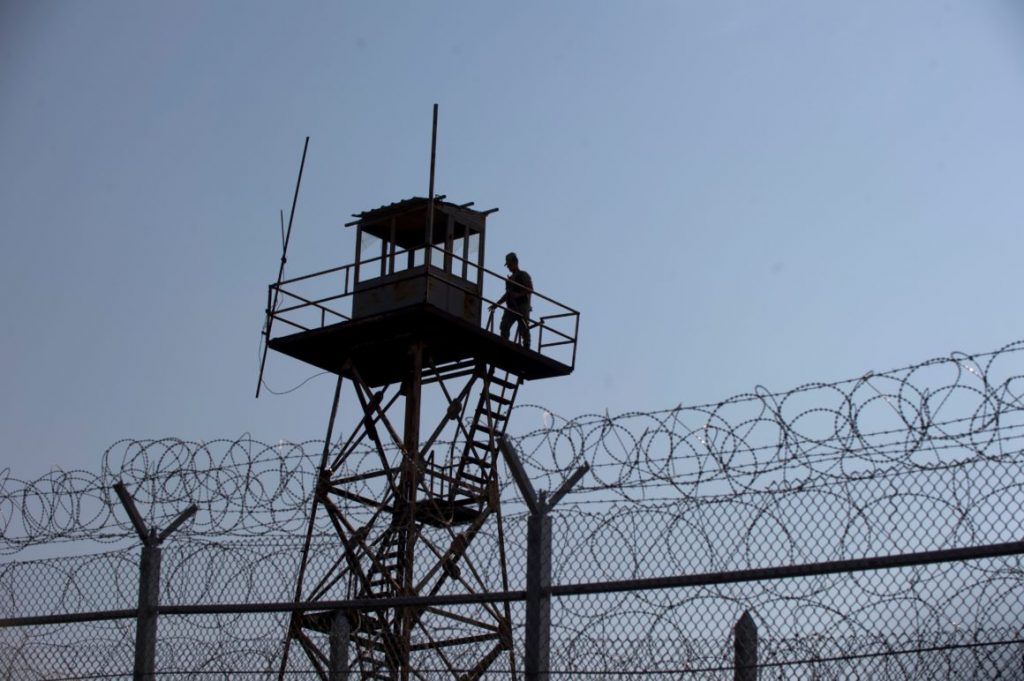


In the United States right now, every news cycle is dominated by talk of The Wall. President Donald Trump has declared a fake emergency at our border with Mexico, lying about the number of criminals, drugs, and trafficking victims crossing illegally through our southern border in order to skirt our democratic system and drain funds from other budget areas (such as education) to fund his wall.
I don’t know how to talk about universities without talking about walls. In January, Trump “proposed temporarily extending protections against deportation for certain young immigrants in exchange for $5.7 billion funding for [his wall.]” These young people, many of them college students and all of them specific young people with names and addresses, were offered as a bargaining chip, offered short-term respite in exchange for a long-range plan to shut down hope for others who one day will be desperate to come to the United States in an attempt to escape poverty, abuse, torture, violence, death. The story of the DACA students, as they are known, is a key part of the larger story of American education. And immigrants and refugees all over the world are a key part of the larger story of education across so many countries right now.
If a school is, in many ways, a community center, I wonder where the stress is: on community or on center? When a wall goes up to keep out The Other, does a local school press out towards the new margin, stretching towards diversity and inclusion? Or does a local school shore itself up, reshaping itself in the image of its power and homogeneity? And does a school across the country expand or contract when a new wall goes up a thousand miles away?
In 2016, students in Prescott College in Arizona led a movement to create a fund to offer financial aid to undocumented students, who are not eligible for federal financial aid. Student activist Ankur Singh livetweeted the roll-out of the Freedom Education Fund:
PC stands w/ undocumented students. #freedomeducation fubd pic.twitter.com/MIquG3OiS5
— Ankur Singh (@ankrsingh) April 7, 2016
We must address systemic injustice and the freedom education fund does this. #freedomeducationfund
— Ankur Singh (@ankrsingh) April 7, 2016
Through this fee we are joining our peers around the world in fighting against injustice #nicod #freedomeducationfund
— Ankur Singh (@ankrsingh) April 7, 2016
Pc is forging a new way for u documentrd students in az to receive an education #freeomeducationfund
— Ankur Singh (@ankrsingh) April 7, 2016
We hope our States and colleges will follow PC’s leadership by opening the doors to the undocumented community #freedomeducationfund
— Ankur Singh (@ankrsingh) April 7, 2016
Education is the process of expanding horizons. Education is the sharing of knowledge across gaps and chasms. Education is connecting ideas together in new ways. Almost every metaphor we have that is about learning (rather than achieving) stresses expansion, sharing, and connection. Our educational institutions are centers, but they are sites whose primary work is in many ways to de-center the world as it is and aspire to a world that is broader, more diverse, filled with more possibility and potential. I write all of this with certainty, but I know that I also write it in resistance. I know that Prescott and Loyola and a small number of schools are in the vast minority trying to cobble together drop-in-the-bucket plans to unwall the university. I know that university leaders are afraid or unwilling to speak for open borders, even as they tout the benefits of “open learning,” “interdisciplinary collaboration,” “globalization,” and “diversity.”
I know that we’ve undertheorized what walls mean to learning. We talk about building open labs and taking down walls in the library to make more open spaces. We’ve celebrated connected learning and invested in technologies to bring our students onto the web. We’ve mashed up disparate subject areas to create “real world” project-based experiences for students that exuberantly extend past the classroom walls. It’s time to talk about what we stand for. This is a pedagogical and institutional generation that revels in the open, that innovates around wall-less-ness. And yet the walls between nations are being brutally raised higher and higher by the day. We– teachers, academics, intellectuals– we should have something to say about this.
Question
Does your university take down physical walls to encourage collaboration? Advocate for open spaces? Celebrate diversity and inclusion? If so, what has your university had to say recently about the move to lock down borders in America and in Europe to prevent the flow of immigrants and refugees? Should universities speak up? Why? How?
